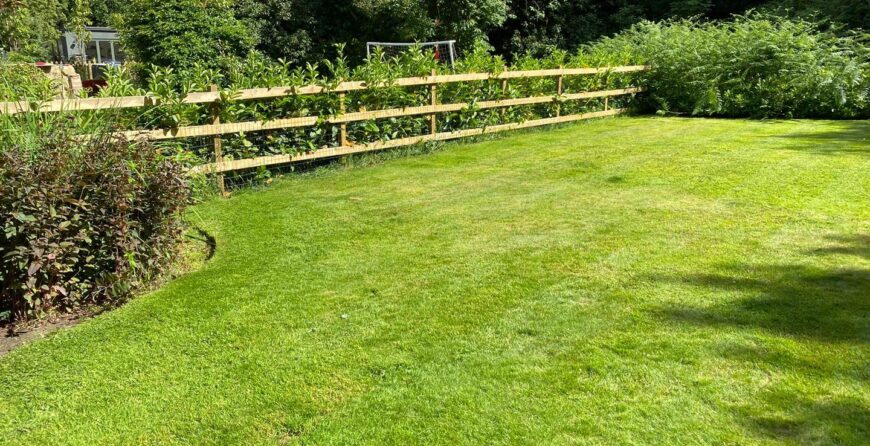How to Choose the Right Grass Cutting Techniques for Your Garden: A Comprehensive Guide
Maintaining a lush and healthy lawn is a dream for every homeowner. A well-manicured garden not only enhances the aesthetic appeal of your property but also provides a serene environment for relaxation and outdoor activities. One of the key aspects of lawn care is choosing the right grass cutting techniques. In this article, we will explore various factors to consider when selecting the most suitable grass cutting techniques for your garden.
1. Understand Your Grass Type
Before diving into the world of grass cutting techniques, it is crucial to understand the type of grass you have in your garden. Different grass species have varying growth patterns, heights, and maintenance requirements. Common grass types include Bermuda grass, Kentucky bluegrass, Zoysia grass, and St. Augustine grass. Research and identify the specific characteristics of your grass type to determine the best cutting techniques.
2. Determine the Ideal Grass Height
Maintaining the appropriate grass height is essential for a healthy lawn. Cutting the grass too short can weaken the roots and make it more susceptible to diseases and weed infestation. On the other hand, allowing the grass to grow too tall can lead to a thatch buildup and hinder proper air circulation. Research the recommended height range for your grass type and adjust your cutting techniques accordingly.
3. Choose the Right Mowing Equipment
Investing in the right mowing equipment is crucial for achieving optimal results. The two main types of mowers are reel mowers and rotary mowers. Reel mowers are ideal for smaller lawns and provide a precise, scissor-like cut. Rotary mowers, on the other hand, are more versatile and suitable for larger areas. Consider the size of your lawn, your grass type, and personal preferences when selecting the appropriate mowing equipment.
4. Follow the One-Third Rule
To maintain a healthy lawn, it is recommended to follow the one-third rule when cutting the grass. This rule states that you should never remove more than one-third of the grass blade’s height in a single mowing session. By adhering to this rule, you ensure that the grass remains healthy and can recover quickly from the cutting process.
5. Avoid Cutting Wet Grass
Cutting wet grass is a common mistake that many homeowners make. Wet grass tends to clump together, making it difficult for the mower to cut evenly. Additionally, the weight of the wet grass can put strain on the mower’s engine and blades. Wait for the grass to dry before mowing to achieve a clean and even cut.
6. Vary Your Mowing Patterns
Mowing your lawn in the same direction every time can lead to compacted soil and uneven growth patterns. To promote healthy grass growth, vary your mowing patterns each time you cut the grass. This technique prevents the grass from leaning in one direction and encourages upright growth.
7. Keep Your Mower Blades Sharp
Dull mower blades tear the grass instead of cutting it cleanly. This can result in a ragged appearance and make the grass more susceptible to diseases. Regularly inspect your mower blades and sharpen them as needed. Sharp blades ensure a clean cut, promoting healthier grass growth.
8. Consider Grass Clippings as Natural Fertilizer
Contrary to popular belief, leaving grass clippings on the lawn can be beneficial. Grass clippings act as a natural fertilizer, returning nutrients to the soil as they decompose. This practice, known as grasscycling, reduces the need for additional fertilizers and promotes a greener, healthier lawn.
9. Adjust Cutting Frequency Based on Growth Rate
The growth rate of your grass depends on various factors such as weather conditions, soil quality, and fertilization. Adjust your cutting frequency accordingly to maintain the ideal grass height. During periods of rapid growth, you may need to mow more frequently, while slower growth periods may require less frequent cutting.
10. Practice Proper Lawn Care Techniques
Grass cutting is just one aspect of lawn care. To ensure a vibrant and healthy lawn, it is essential to incorporate other maintenance practices such as watering, fertilizing, and aerating. By following a comprehensive lawn care routine, you can create an environment that promotes optimal grass growth and overall garden health.
In conclusion, choosing the right grass cutting techniques is crucial for maintaining a healthy and beautiful lawn. Understanding your grass type, determining the ideal grass height, selecting the appropriate mowing equipment, and following proper cutting practices are key factors to consider. By implementing these techniques and incorporating them into a comprehensive lawn care routine, you can enjoy a lush and vibrant garden that will be the envy of your neighborhood.


